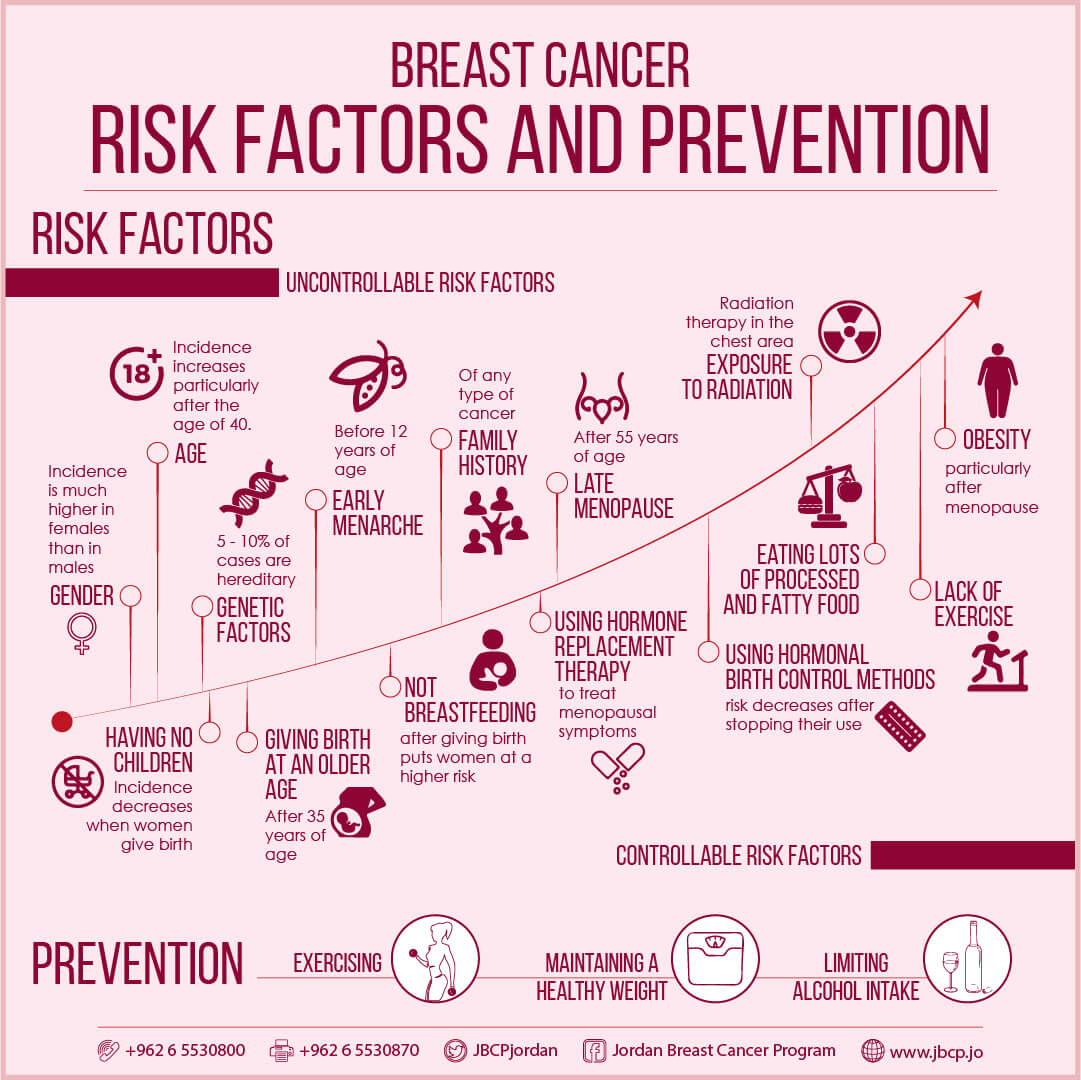
Many risk factors are linked to breast cancer. The two most common, being a female and getting older, are factors beyond your control. However, there are lifestyle changes that you can do to prevent cancer, such as: exercising, maintaining a healthy weight and limiting your alcohol intake. Having a better understanding of risk, the factors that affect it, how to assess yours and how to manage it can help you make decisions about your own lifestyle. As well, working with your health care provider can help you determine a breast cancer screening plan that is right for you.
Over the past 30 years, researchers have identified many factors that increase the risk of breast cancer, as well as a few factors that lower it. It is still not known exactly what causes breast cancer to develop at a certain time in a certain person; it is likely a combination of factors. Although there are ways to manage the risk, no one has control over developing cancer.
Even though the cause of breast cancer is not known, there are certain risk factors that increase the chance of developing breast cancer. Some women have many factors that increase their risk of breast cancer, but they do not develop it. On the other hand, there are women who develop breast cancer without having any risk factors.
There are two types of risk factors:
- Risk factors that you cannot change
- Risk factors that you can change
Uncontrollable Risk Factors
- Sex: incidence of breast cancer in females is much higher than in males
- Age: incidence of breast cancer increases with age, particularly after the age of 40
- Genetic factors: 5-10% of cases are hereditary Personal history of breast cancer
- Family history of breast cancer, ovarian cancer or prostate cancer (first degree relatives)
- Early menarche (before 12 years of age)
- Late menopause (after 55 years of age)
- Exposure to radiation therapy in the chest area (as a treatment for other types of cancer earlier in life)
Controllable Risk Factors
- Having no children; the incidence rate decreases when women give birth
- Giving birth at an older age (after 35 years of age)
- Not breastfeeding after giving birth puts women at a higher risk
- Using Hormone Replacement Therapy (HRT) to treat menopausal symptoms; risk decreases after stopping HRT.
- Using hormonal birth control methods; risk decreases after stopping their use
- Obesity; particularly after menopause
- Lack of exercise
- Eating lots of processed and fatty foods



